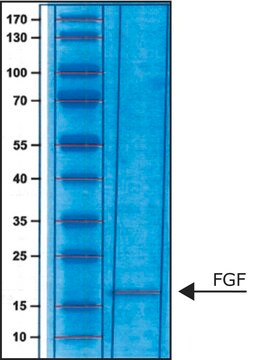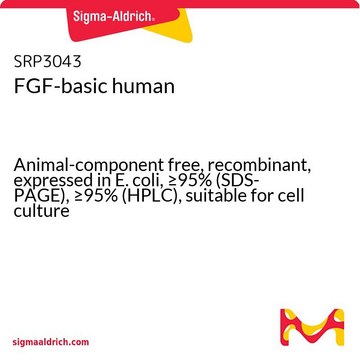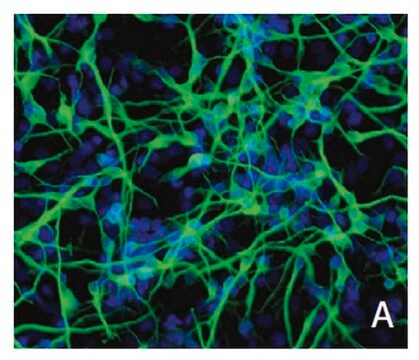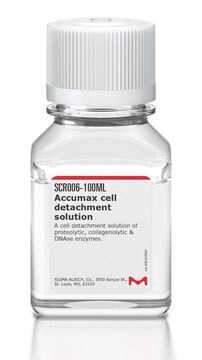GF003AF
Fibroblast Growth Factor basic, human
Animal free, >95% (SDS-PAGE), recombinant, expressed in E. coli, suitable for cell culture
Sinônimo(s):
FGF-2, bFGF, basic-FGF, Heparin-Binding Growth Factor 2, Prostatropin
About This Item
Produtos recomendados
product name
Fibroblast Growth Factor basic, human recombinant, animal-free, The Fibroblast Growth Factor-basic (or bFGF protein) is a heparin binding growth factor which stimulates the proliferation of a wide variety of cells including mesenchymal, neuroectodermal & endothelial cells.
fonte biológica
human
Nível de qualidade
Ensaio
>95% (SDS-PAGE)
fabricante/nome comercial
Chemicon®
técnica(s)
cell culture | stem cell: suitable
Impurezas
<0.1 EU/μg Endotoxin (of bFGF)
entrada
sample type epithelial cells
sample type mesenchymal stem cell(s)
sample type: human embryonic stem cell(s)
sample type neural stem cell(s)
sample type pancreatic stem cell(s)
nº de adesão NCBI
nº de adesão UniProt
Descrição geral
Aplicação
forma física
Armazenamento e estabilidade
General applications:
After a quick spin, reconstitute in 0.1M phosphate buffer, pH 6.8, to a concentration of 0.1-1.0 mg/mL. Reconstituted bFGF should be stored in working aliquots at -20°C for up to six months. Multiple freeze/thaw cycles will result in significant loss of activity.
For Human ES cell culture:
After a quick spin, reconstitute to 10 μg/mL in a filtered solution of 0.5% BSA, 1 mM DTT, and 10% glycerol in Dulbecco′s PBS. Aliquot and store at -20°C for up to six months. This solution can then thawed and diluted to 4 ng/mL for the culture of human ES cells with a feeder layer, or to 8 ng/mL to supplement mouse embryonic fibroblast-conditioned medium (for feeder-free human ES cell culture).
Nota de análise
Informações legais
Exoneração de responsabilidade
Código de classe de armazenamento
11 - Combustible Solids
Classe de risco de água (WGK)
WGK 3
Certificados de análise (COA)
Busque Certificados de análise (COA) digitando o Número do Lote do produto. Os números de lote e remessa podem ser encontrados no rótulo de um produto após a palavra “Lot” ou “Batch”.
Já possui este produto?
Encontre a documentação dos produtos que você adquiriu recentemente na biblioteca de documentos.
Os clientes também visualizaram
Artigos
Fibroblast growth factors in cell culture and various growth factors for your research
Nossa equipe de cientistas tem experiência em todas as áreas de pesquisa, incluindo Life Sciences, ciência de materiais, síntese química, cromatografia, química analítica e muitas outras.
Entre em contato com a assistência técnica













